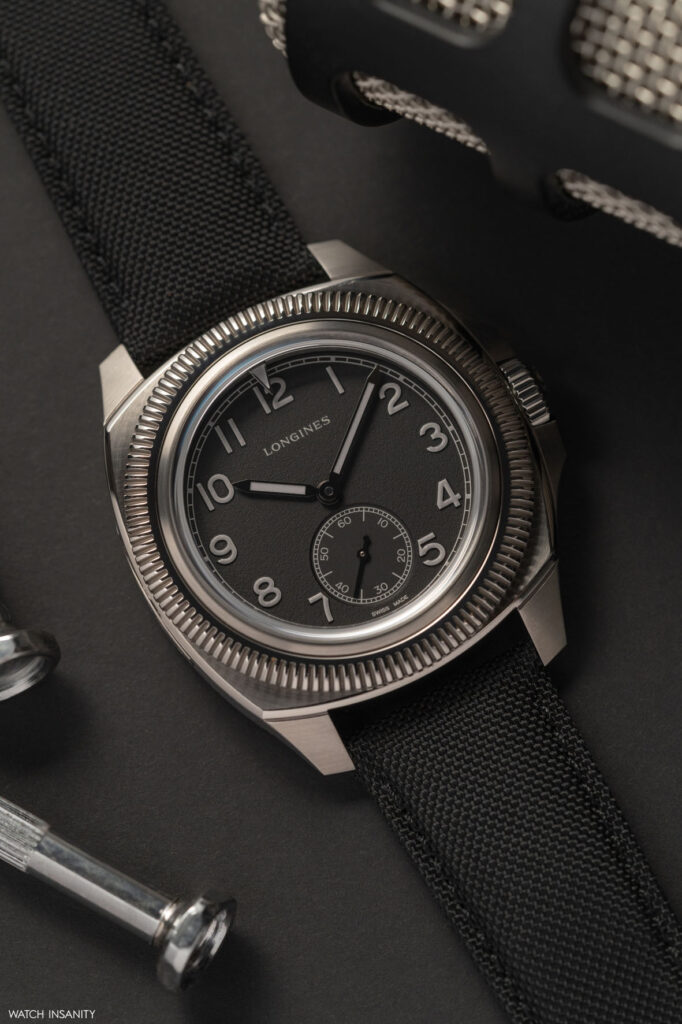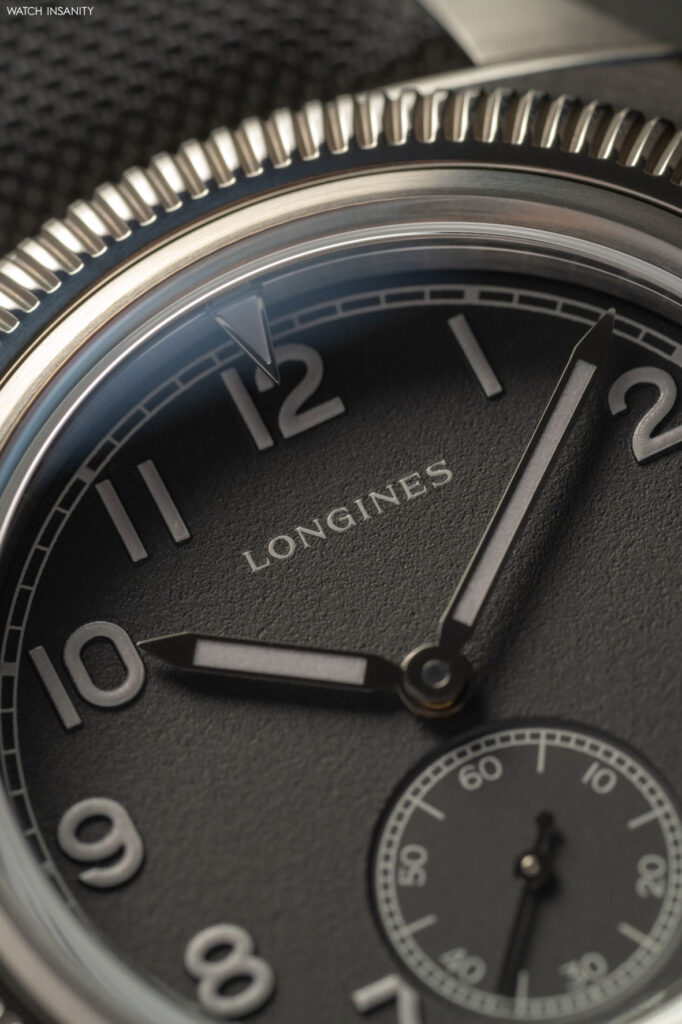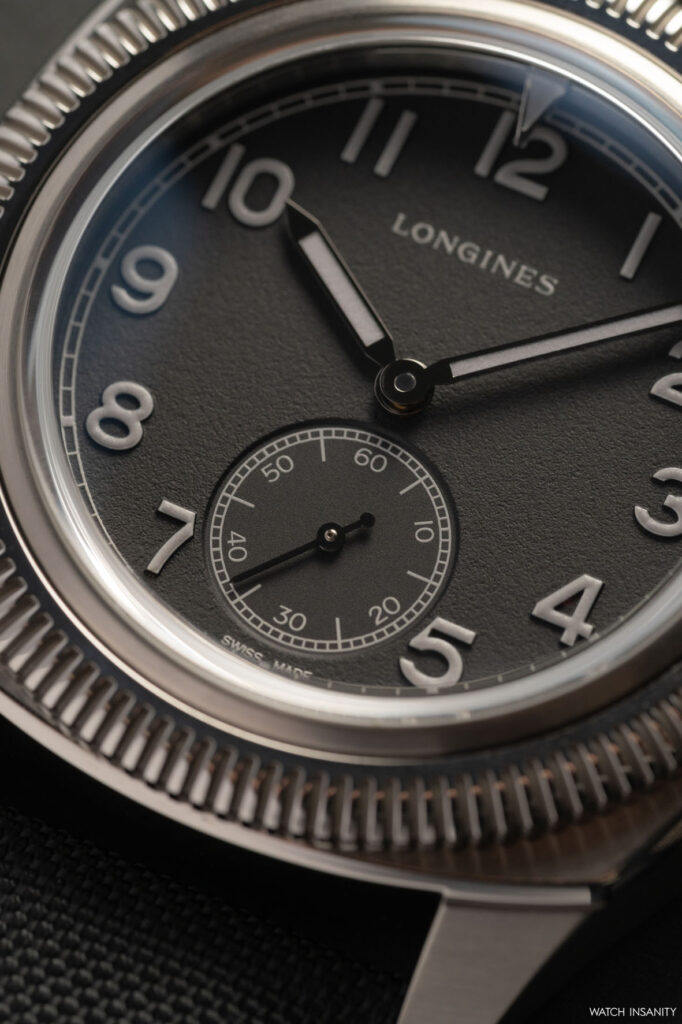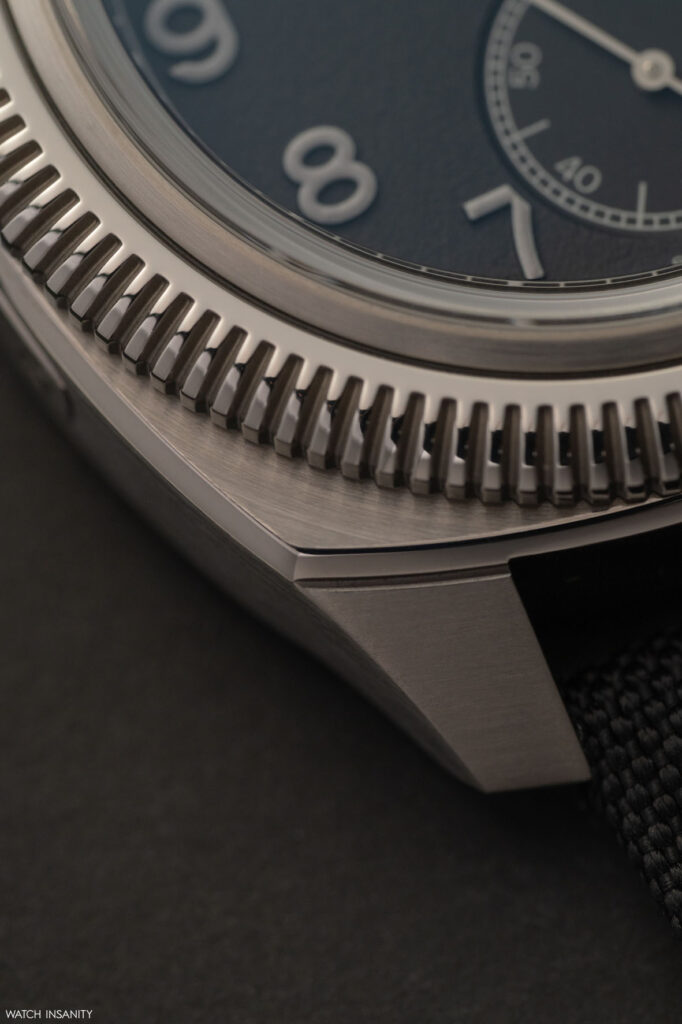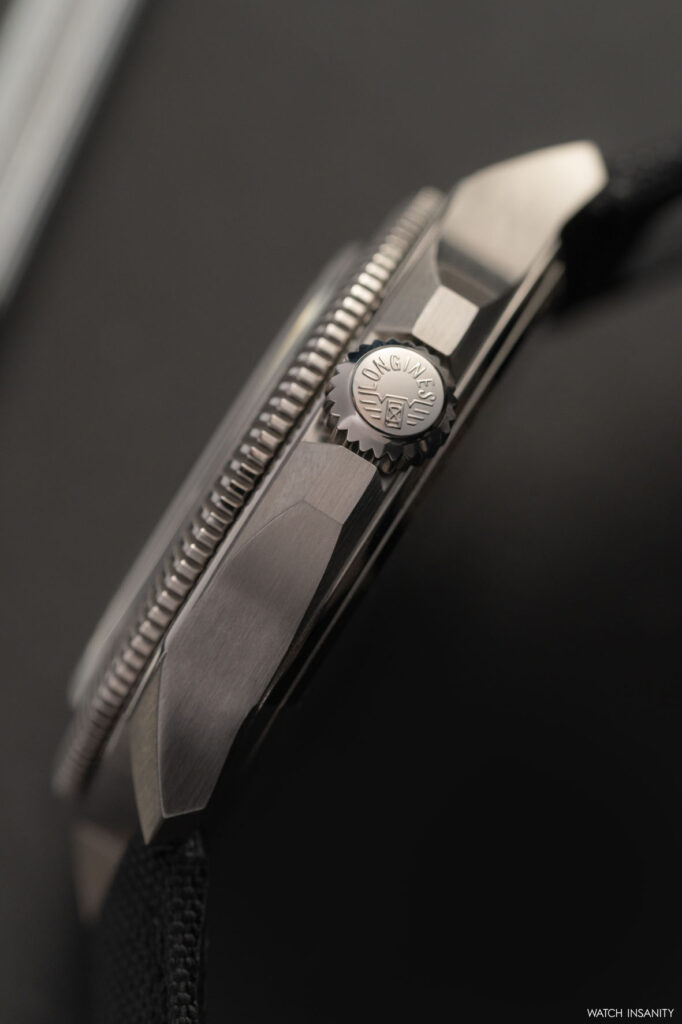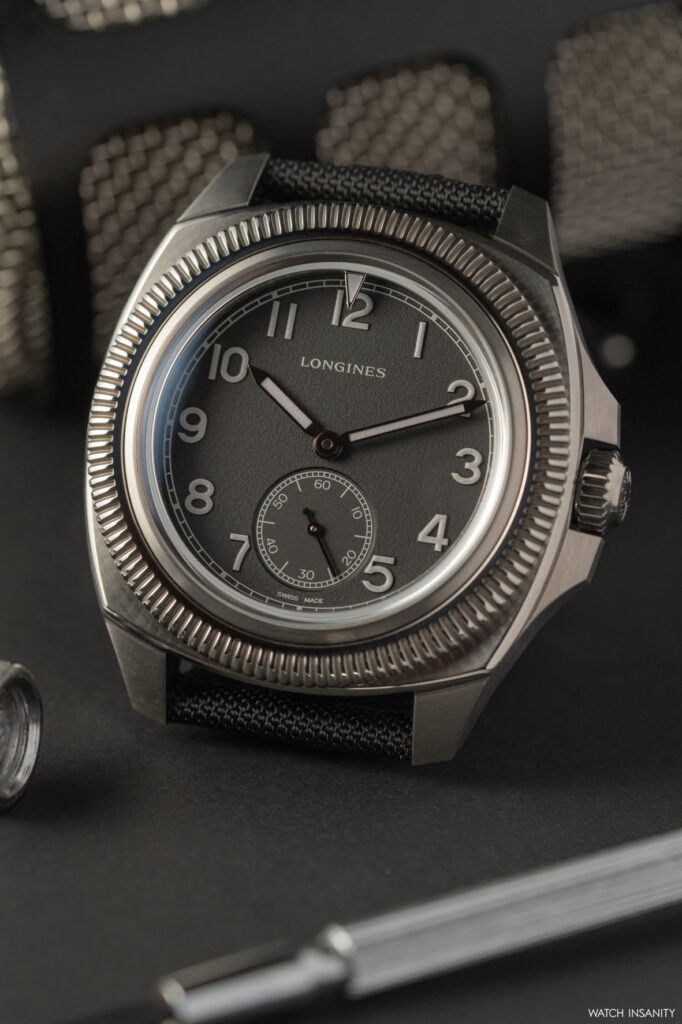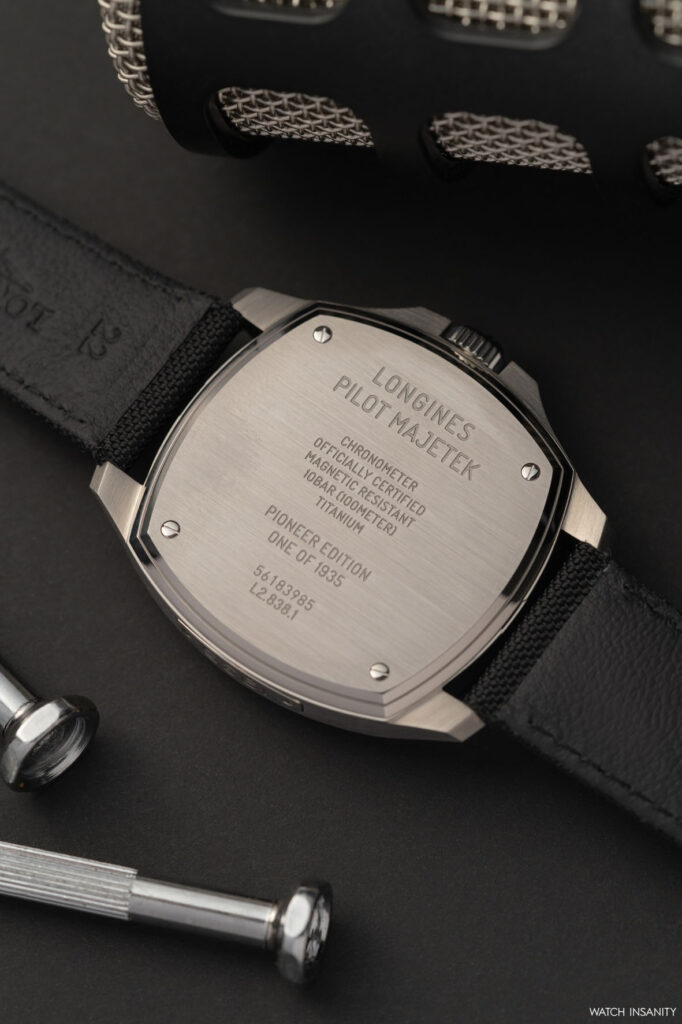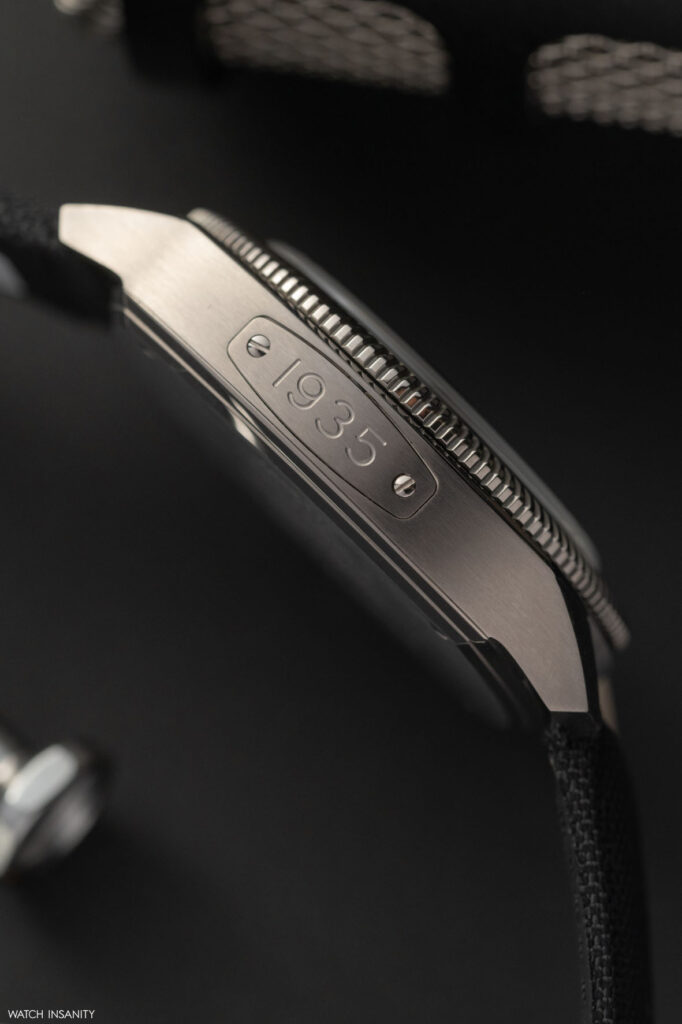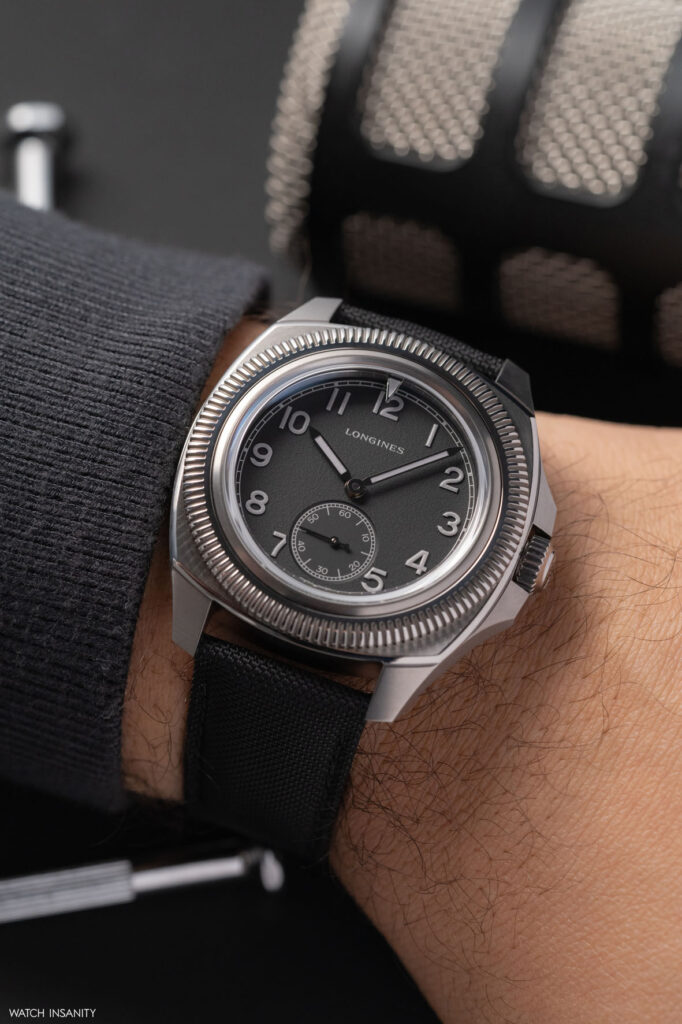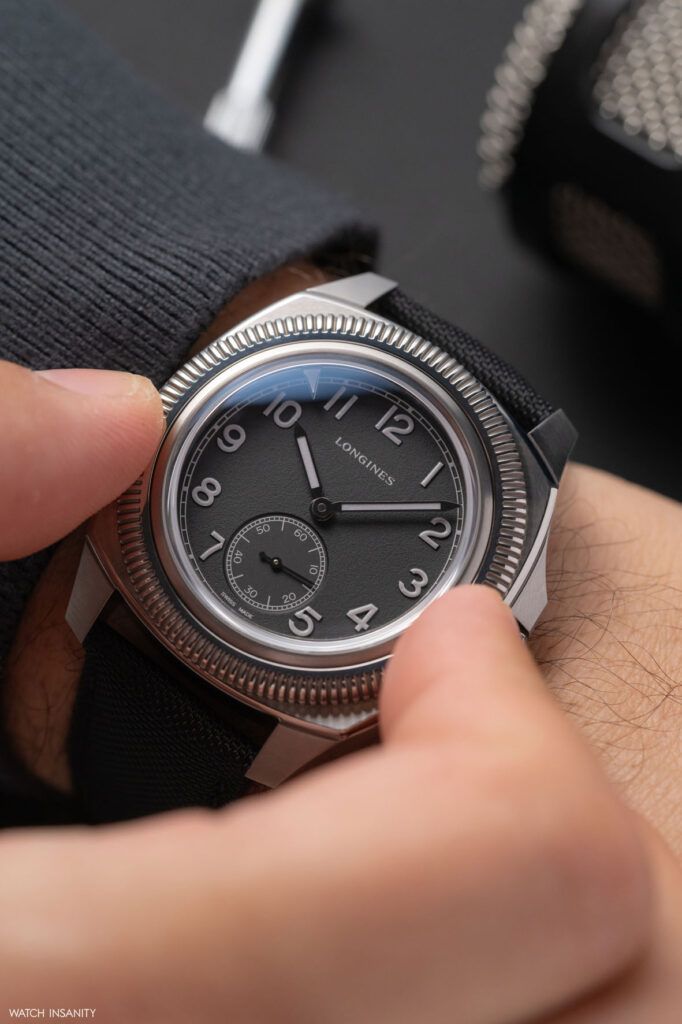Pilot Majetek Pioneer Edition: lightness in Longines style
8 July 2024Last spring, Longines breathed new life into the Pilot Majetek, attempting to re-imagine one of its historical pieces from the 1930s according to more modern canons. We wrote about it in this article, in which you can reread the origins and history of a watch that saw the light of day in the darkest period of contemporary history, and went through the 20th century only to be re-proposed in the 21st in a new guise.
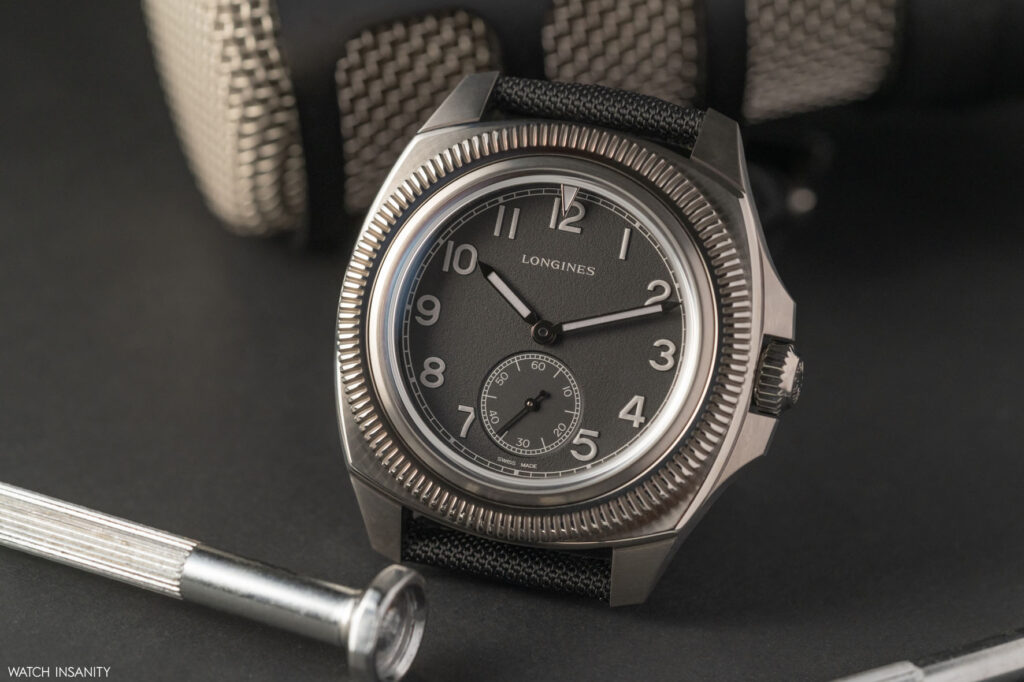
This new look mainly results in the case size being enlarged from the original 40 mm to the current 43 mm, while maintaining a modern and robust design clearly inspired by the cushion shape ofthe watch that Longines produced for the Czechoslovakian Air Force from 1935 to 1948.
THE COLOURS OF THE LONGINES PILOT MAJETEK PIONEER EDITION
Today, Longines decided to work once again on the Pilot Majetek and place it within that Pioneer Edition line in which a chronograph from the Spirit collection already stands out. What is the contact point between the two watches, apart from the fact that they are both pilot timepieces? The titanium case: the real novelty of the Pilot Majetek Pioneer Edition recently unveiled. A material that, in the vein of Longines’ Pilot’s Watches, is also found on the Avigation BigEye with a blue dial.
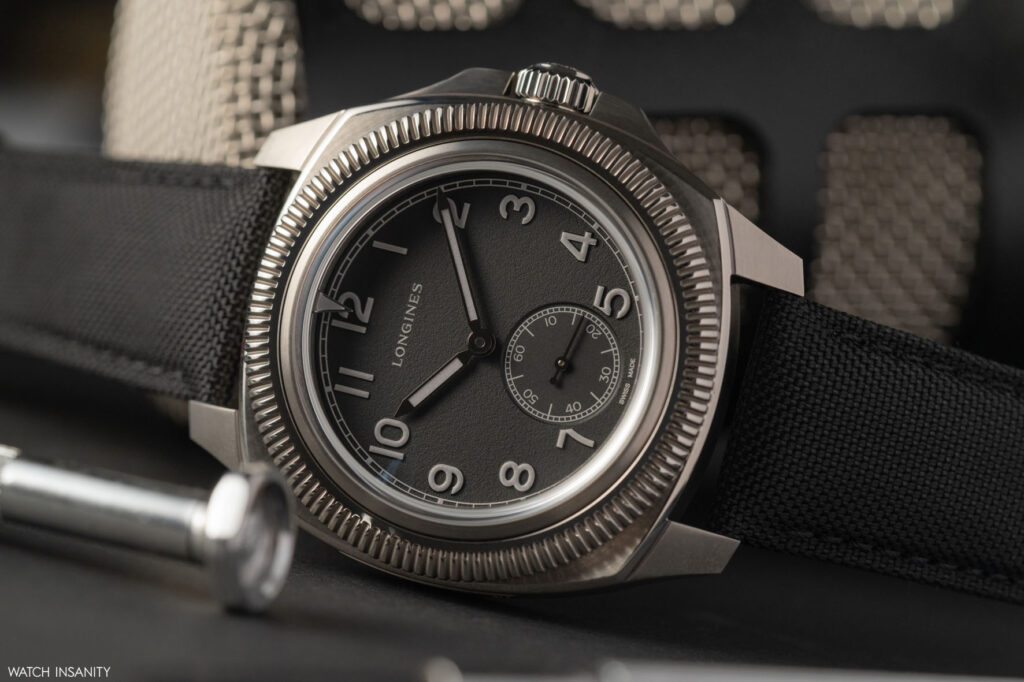
Although the new titanium version maintains the same design as the steel one, Longines has succeeded in giving the Pilot Majetek Pioneer Edition a more modern look not only by working on the case material, but above all on the colour palette. Compared to its predecessor, in fact, the new reference has a darker dial, with a beautiful grené finish that is almost reminiscent of the tarmac of an airstrip. Instead of using the ‘old radium’ cream-coloured SuperLuminova used for the hour-markers on the steel case version, Longines has opted here for a soft grey shade, which matches very well the titanium of the case. Better, in our opinion, than on the 2023 Pilot Majetek.
The dial’s basic configuration is the same as on the previous model, with the indices consisting of raised Arabic numerals, a chemin-de-fer external chapter ring, straight dagger hands, a large seconds counter at 6 o’clock, and no date display. Even the characteristic triangular-shaped indicator on the Majetek’s inner rotating bezel is rendered in this grey shade, creating a complete colour amalgam that decisively distinguishes the Pilot Majetek Pioneer Edition from previous references.
LONGINES AND TITANIUM WORK
After describing the work performed on the colours, let us come to the watch’s star feature: the case. Longines has chosen grade 5 titanium, which – among the 35 different degrees of purity when it comes to titanium and its alloys – has very good tensile properties and excellent resistance to cracking and crack propagation. Despite the fact that the overall case shape is the same as that of the 2023 version, the 43 mm grade 5 titanium of the Longines Pilot Majetek Pioneer Edition, once worn, clearly gives a different character to the watch.
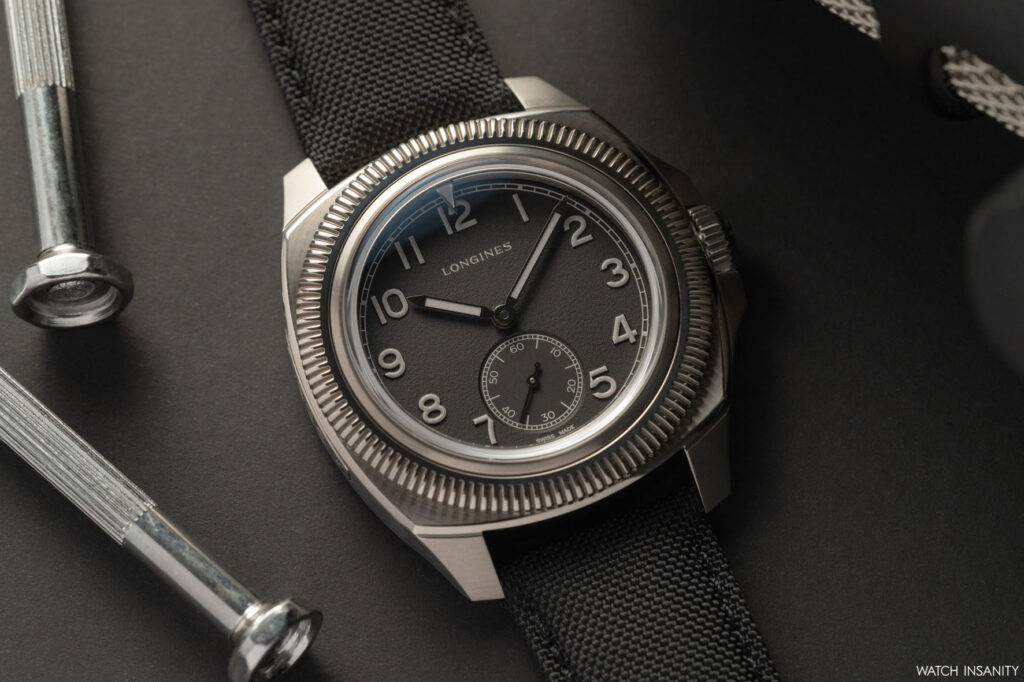
In both versions, the case is undoubtedly rather bulky. The cushion shape, which is in fact almost square, the significant thickness (13.3 mm), the square, medium-length lugs and a lug-to-cuff distance of 51.4 mm make it stand out on the wrist. By virtue of these important dimensions, the Pilot Majetek’s steel case, which is a fine block of steel when worn, is hard to ignore. The grade 5 titanium case on the Pilot Majetek Pioneer Edition, on the other hand, is incredibly light. Admittedly, it is not one of those watches that can hardly be felt on the wrist, but the choice of a different material in this case is very beneficial to its wearability.
Moreover, the case is also well finished and aesthetically interesting, thanks to a balanced combination of vintage and military elements, the bidirectional rotating bezel with its deep groove, and modern design, the sturdy crown-protecting shoulders. Polished and satin finishes alternate on the surface of the case and, with titanium’s rather dark colour compared to that of steel, create a very elegant effect without lessening the watch’s sportiness.
The caseback is closed, also brushed, and engraved with the same military-style inscriptions as on the steel version, with one important addition: the indication of the limited edition. Only 1935 pieces of the Longines Pilot Majetek Pioneer Edition are in fact being made, a number that recalls the year when the production of watches for Czechoslovakian pilots began.
THE CALIBRE AND PRICE POSITIONING
A few words, finally, about the movement. As the other models in the collection, the Longines Pilot Majetek Pioneer Edition is fitted with the automatic calibre L893.6, made exclusively for Longines by ETA, which exploits the synergies within the Swatch Group. It is a movement that, among those in its segment, is currently at the top for its characteristics and performance, starting with the silicon balance spring (now the standard in Swatch Group calibres, and not only) and its remarkable resistance to magnetic fields. It works at a frequency of 25,200 vibrations per hour and has a respectable power reserve: 72 hours. It also has the added bonus of being chronometer-certified by the COSC. The latter feature is commemorated by an engraving on the caseback and, on both this version and the steel version, Longines has resisted the temptation to put the inscription on the dial, as other competitors proudly do, in order to avoid ‘tarnishing’ its heritage look.
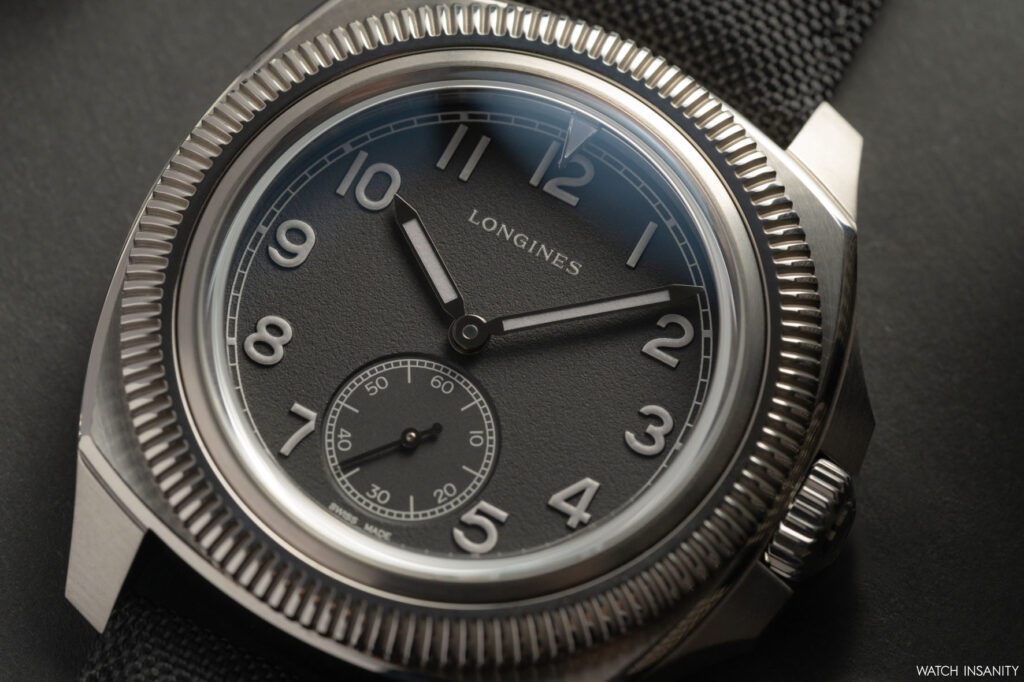
Above, we wrote about the chromatic amalgam that characterises the Longines Pilot Majetek Pioneer Edition. Well, it is reinforced by replacing the steel version’s brown leather strap with one made of a black fabric. A choice that is certainly less vintage but more effective from the point of view of the watch’s aesthetic harmony.
The Longines Pilot Majetek Pioneer Edition costs 5,400 euros, i.e. 1,200 euros more than the Pilot Majetek. A price difference given almost exclusively by the choice of material, and which places the watch in a decidedly high bracket for what is the average Longines offer. After all, we are talking about a charismatic, important piece, one that, in the brand’s offer, can be defined as a ‘talking piece’. One may or may not be a fan of revisiting historical pieces, but in this watch’s case, Longines’ historical and stylistic consistency as well as its industrial capacity must be acknowledged. In a sector in which the bar of excellence is being moved ever higher, this is no small accomplishment.
By Davide Passoni

